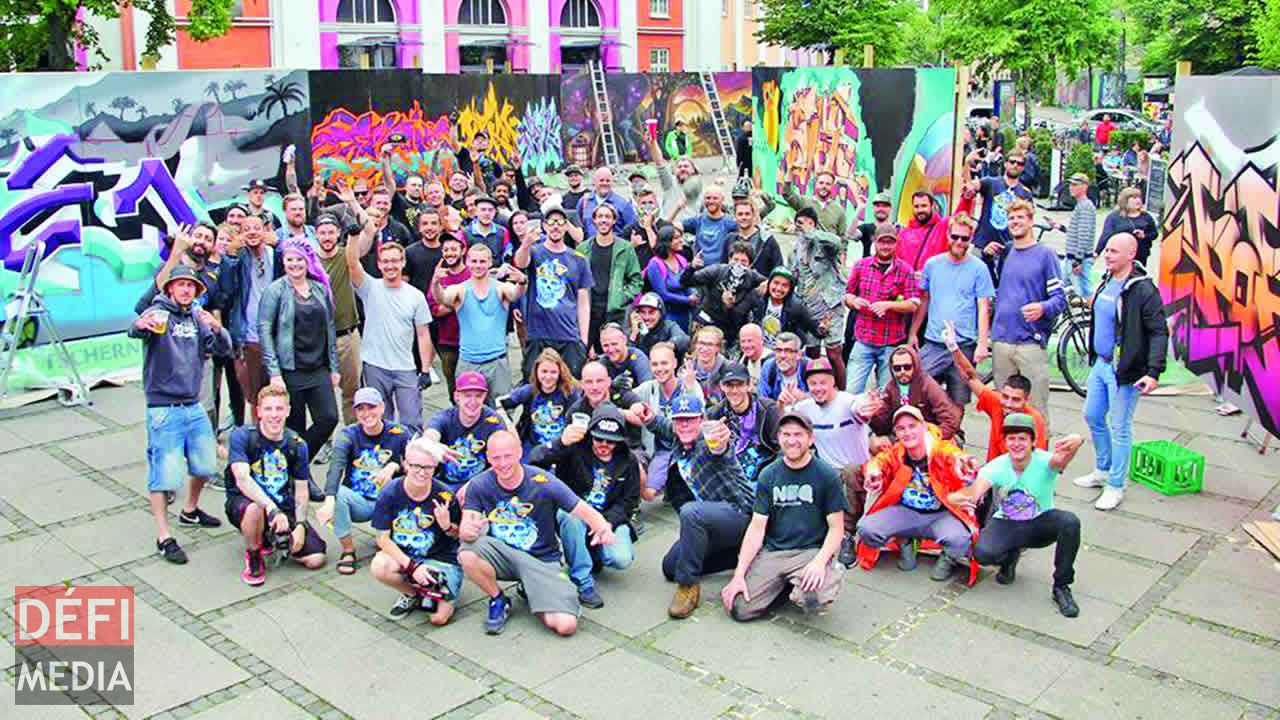
It is a way to express themselves, to speak out their heart, yet it is prohibited in Mauritius. Joshila Dhaby travelled to Copenhagen for the International Meeting of Styles. She is a Street Artist and lives by her passion.
Publicité
It all started with the Graffiti on the sides of train cars and walls during the 1920s and 1930s. The gangs were the one expressing themselves most of the time. Graffiti became a more significant way of expression when young people started to ‘battle for meaning’, which is sometimes still the case. In Mauritius, however, street art is prohibited. But it can be practised if permission is granted! The International Meeting of Styles is a way of gathering Street Artists.
It is the world’s largest Graffiti-Festival since 2002 and is an international network of graffiti artists. The organisers are proudly keeping things real through halls and walls. Their objectives are to bring together those who are passionate about graffiti, to push them to communicate and share ideas and skills. They also promote multicultural exchanges.
Being a Street Artist
As a street artist, Joshila uses spray cans and other medium to create a piece. She uses acrylic paint as well as stencils. “Mastering ‘can control’ isn’t easy. There is a lot of hand movement and wrist and arm rotation.” For her, spray paint is beautiful. When she paints with a spray can, she is able to blend colours and create effects that she would not be able to achieve using regular paint. Plus, it dries quicker, making it perfect for street painting. “I feel confident while painting on walls. I never know beforehand exactly how the final work will look like as I add details or go back to changing certain aspects of the work, but I do know that in the end, it will wow me!”
Street painting encourages her to communicate her feelings through her art. “I like painting people and the environment. I aim for my artwork to be thought-provoking or to convey a message”.
Funding can be an obstacle. Art supplies and materials are expensive. So, to be able to paint, she looks for art events and festivals calling for artists. The spray cans are always provided. She is also currently looking for a venue that she could convert into an art studio in the northern part of the island.
When she reads about street art and street artists around the world, it seems that most artists go out and claim space and express themselves. It is a fact that in Mauritius and many other countries, permission is needed to paint in public spaces. “I think we need legal and accessible public walls to paint on. Or we need an art district…Street Art style! Right? I’d be there every day”.
She assumes that Graffiti and Street Art are usually considered public art if permission is granted. But people still see unauthorised street art in many places. (Invader, Shepard Fairey, Banksy, Jace)… She also wondered about how the authorities sanction illegal street art/graffiti, and those artists who own the artwork…“I don’t think we are anywhere near starting a debate about enforcing the artist’s rights in Street Art”.
Her inspiration
Possessing a creative mind, she has always painted. While her style has evolved, she remains very attentive and curious. “My inspiration comes from my environment, societal issues, consumerism… Every single wall is a new challenge. I usually adapt my art to the location, size and form of the wall.” She wanted her work to reach a bigger audience so she started painting on walls. She practises on the walls at home with spray cans.
Her Copenhagen experience
“Copenhagen is a beautiful city. All those bicycles, happy faces, and no loud traffic make for a very peaceful and enjoyable painting environment”. It always makes her happy when pedestrians and vehicles stopped by the painting venue, which was on Axeltorv. “They not only took pictures but also asked many questions, showing real interest. This kind of engagement is very motivating for street artists.” It is always exciting for her to paint a wall. The challenge was also to be able to finish the wall despite the rain.
Each artist and each painting had different styles and came from different countries. It was a real- Meeting of Styles! They were all very friendly and we traded a few painting secrets or best practices. “There was this ambiance, this mood and these vibes that you can only feel at art festivals, I suppose”.
Expressing youth concerns towards our environment
She painted a girl and a turtle facing each other. “My wall represents the responsibility of our youth towards our environment. Thoughts that I want to provoke from the viewers are whether our youth have the necessary knowledge to deal with environmental uncertainties.” Or, in an age of ‘Abundance’, according to her, one should understand what priorities are. But she also wants the public to give their own sense to the work.
Reshmee BHEEMUCK

Notre service WhatsApp. Vous êtes témoins d`un événement d`actualité ou d`une scène insolite? Envoyez-nous vos photos ou vidéos sur le 5 259 82 00 !




















![[Info Soirée] : «Kaisen pas pou kapav realiz so rev mont so lakaz»](https://defimedia.info/sites/default/files/styles/square_thumbnail/public/thumbnail_201224.jpg?itok=kW2K9God)
